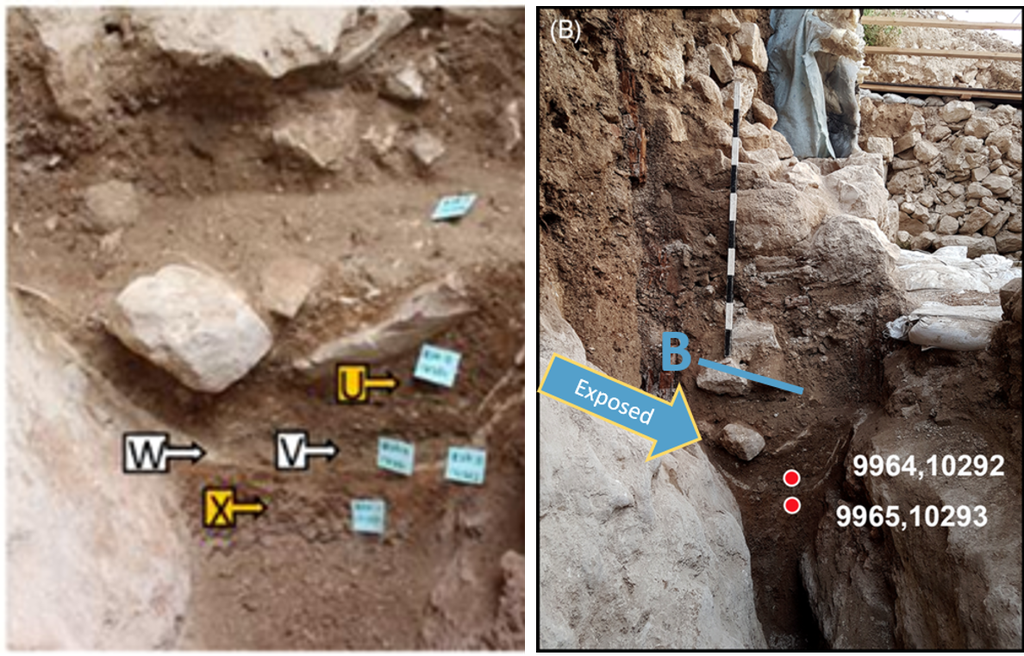
Organic fragments in half-pipe, open water drain
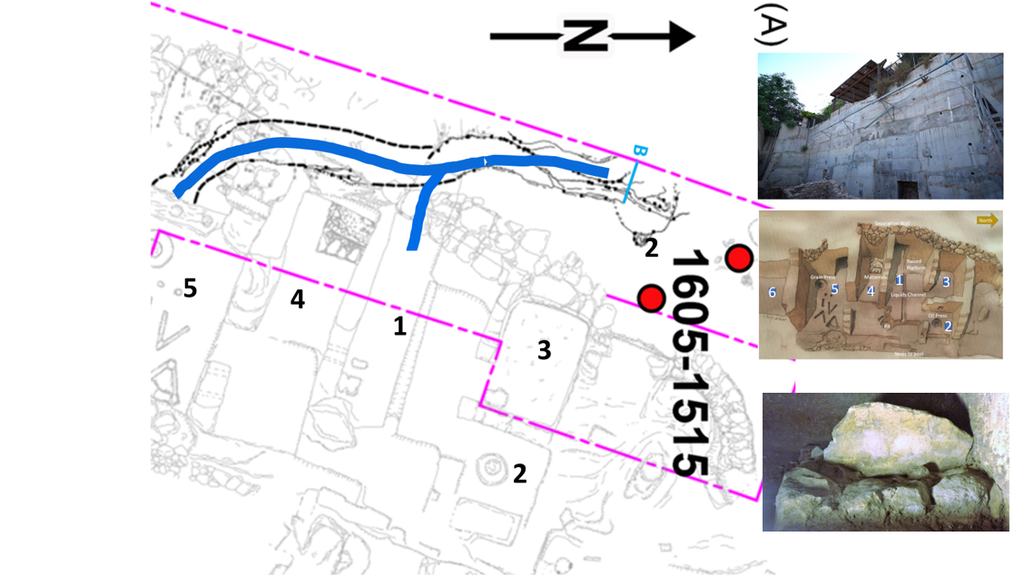
Water channel servicing rock-cut-temple rooms
On the eastern slopes of Mount Moriah, in the City of David, a significant Middle Bronze Age water system, remnants of a reservoir and a water channel were discovered. Organic samples were carbon dated by Cambridge University and Weizmann Institute to the water channel's last use in 1535 BCE. The water system supplied two of four rooms, hollowed from the bedrock of the ancient rock-cut-temple, located above the Gihon Spring. The water once flowed to the rooms, more than 3500 years ago, as is now evident in landscapes mapped by the Israel Antiquities Authority.
The organic samples were extracted nearest the remnant plaster that formed an open drain, running from the elevated reservoir, above and along the bedrock down the slope into the rooms. The date of the samples closest to the underside of the drain and those immediately above it exclusively overlaps the orthodox biblical chronology of Jacob's last 30 years in the homeland of his ancestors. After that he and his family immigrated to Egypt. This means the water system was constructed and only ever used during this time. Once Jacob left for Egypt, unattended, the water system and the entire rock-cut-temple went out of use and was consumed by falling sand and natural debris on the steep slope.
The water system was built to flush water onto the floor to clean blood and excrement from a room that was used to slaughter and process animals and another used to offer animal sacrifices on stones forming an altar. Between these rooms, a room with a standing stone or matzevah that, relative to the dating of the water channel, is undoubtedly the one Jacob erected as his Covenant at Beth El on Mount Moriah, after which he assumed his name Israel (Genesis 35:7-15).
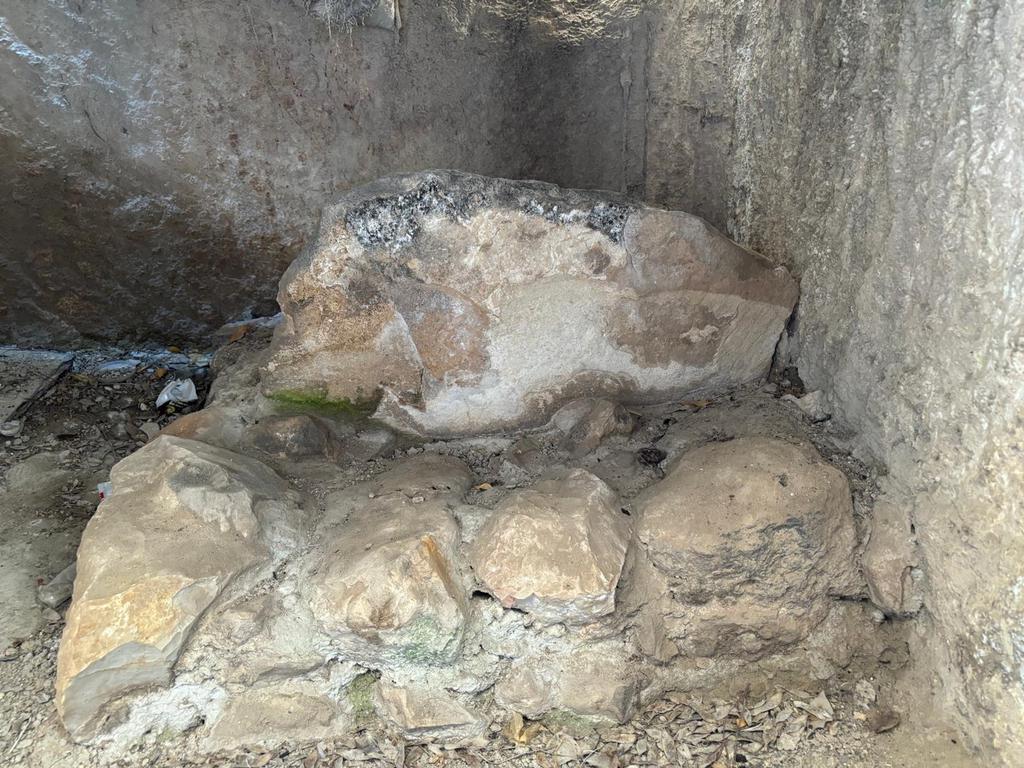
Count the fused stones on the front?
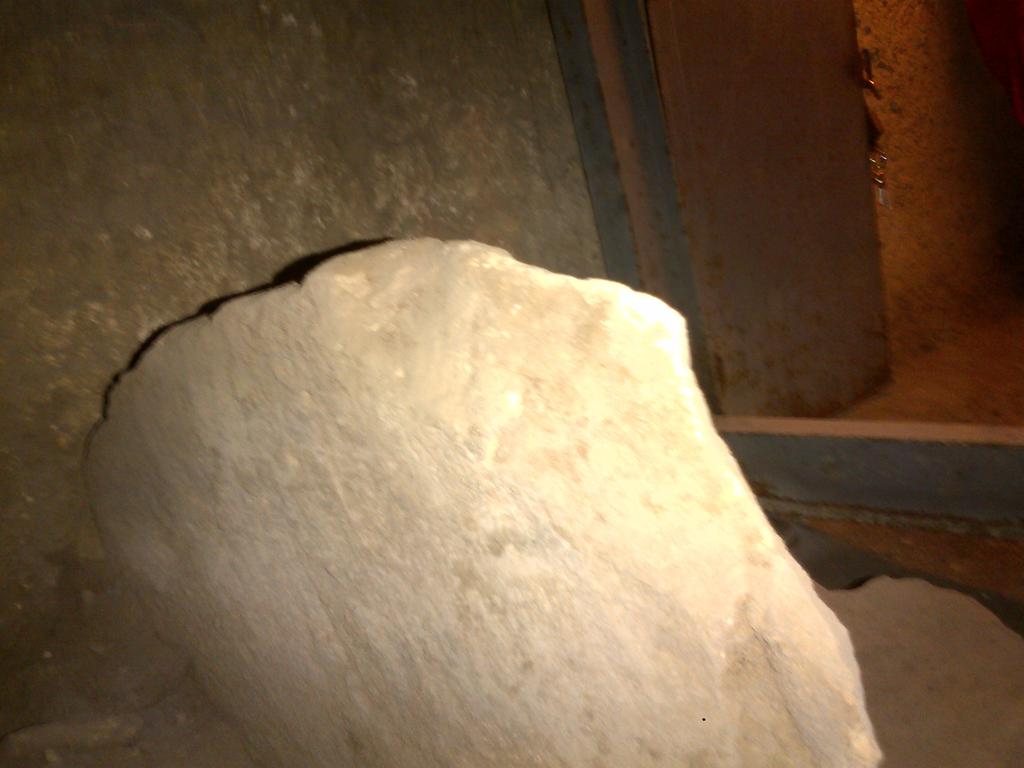
Compare the view from the back!
Senior archaeologist Ronny Reich opened his recent book "Excavations in the City of David" with a chapter, "A moment in which to be born", by explaining that the spring, east of the city, bellow the rock-cut-temple was never called Gihon, instead the Bible called it En Shemesh (Sun Spring). The spring is a perennial, intermittent gusher, resembling a pump, sometimes gushing, other times flowing, descriptively a gihon (meaning; bursting forth or gushing in Hebrew). To this day the morning sun shines brightly on the spring's entrance.
Ronny used En Shemesh to reconcile a difficult passage from the Book of Joshua that defined Israel's tribal boundaries. We found that it perfectly describes the prerequisite intersection of the altars raised bedrock foundation, on the northern boundary of tribe Judah with the southern boundary of tribe Benjamin.
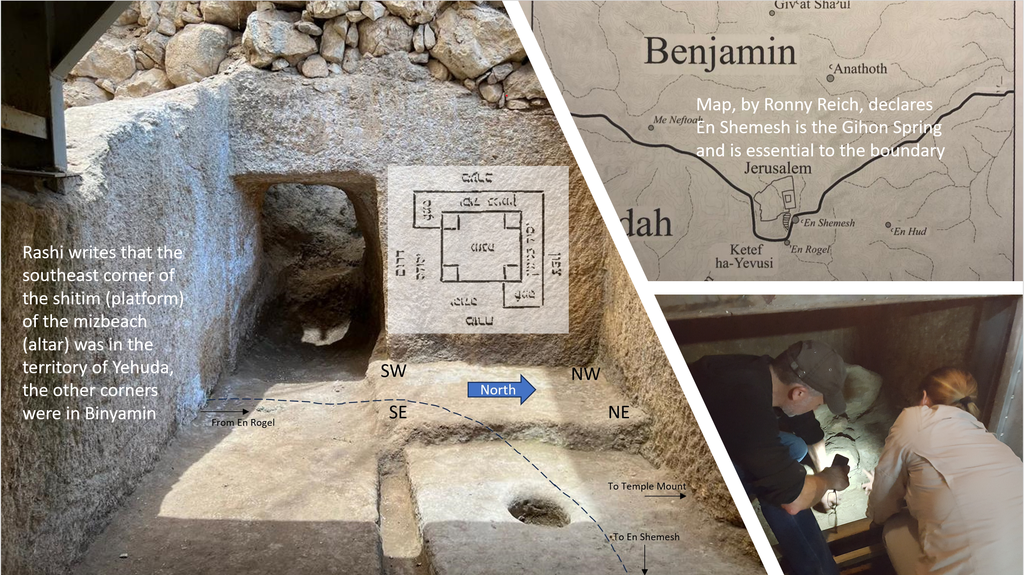
Note the SE corner of altar foundation
This is important and controversial because the first and second temple altars were built further up on the summit of the mountain, in the area of the temple mount, but that location does not comply with Ronny’s En Shemesh boundary. Surprisingly the rock-cut-temple and the location of its altar foundation at the intersection between En Rogel and En Shemesh, on the eastern slope of Mount Moriah, is compliant with Ronny Reich’s boundary. Further, the altar foundations westernmost construction also complies with Maimonides Guide for the Perplexed (Part 3 45:1):- Undoubtedly all people turned then to the East [worshipping the Sun]. Abraham turned therefore on Mount Moriah to the West, that is, the site of the Sanctuary, and turned his back toward the sun.
The altar foundation is and by Jewish law must be of bedrock. Back then loose boulders would have been assembled on it, each time it was used, to form the actual altar the Bible is likely talking about in Genesis 35:7:- There Jacob built an altar and named the site El-bethel, there God had first revealed Himself to him when he was fleeing from his brother, 22 years earlier, when he experienced his stairway to heaven dream and first erected a Matzevah.
How is it then possible that the altar location of the first temple of Solomon and second temple could differ with the water system of an altar, dated 700 years earlier to Jacob, biblical forefathers Isaac and Abraham or even the high priest of Salem - Malchi-Tzedek?
The altar of the first temple, at the summit was not selected by Solomon, but by his father David. 1 Chronicles 21:17 (also 2 Samuel 24) tells us: David said to God, “Was it not I alone who ordered the numbering of people? I alone am guilty and have caused severe harm, but these sheep, what have they done? O Lord my God, let your hand fall upon me and my father’s house, and let not your people be plagued. Then the prophet Gad told David to go up to the summit of Mount Moriah and set up an altar and sacrifice on it. David acquired the summit from the Jebusite King who prior to David controlled the lower southern section of Mount Moriah. The summit of Mount Moriah became the temple mount as we know it today. David’s altar location was selected to rectify his personal sin.
The discovery of this altar, further down Mount Moriah, above En Shemesh or the Gihon Spring, as it is known today, must be the location associated with Jacob, his father Isaac and grandfather Abraham. These dueling locations present very complex questions that have now emerged before us.
The temple location is the forefront of Israel’s wars. Homes of violent Islamic Jihadists contain images of the Golden dome and Al Aqsa mosque on the Temple Mount. Every Jew believes, by tradition, that the Temple Mount once contained the site where Jacob’s father was bound and offered as a sacrifice by his grandfather. With this discovery perhaps Israel will shift from its Temple Mount tradition toward Mount Moriah's rock-cut-temple, defined by its compliant location, altar's raised foundation, matzevah, that is undoubtedly Jacob’s and its western orientation in order to build its final Temple on Mount Moriah.



